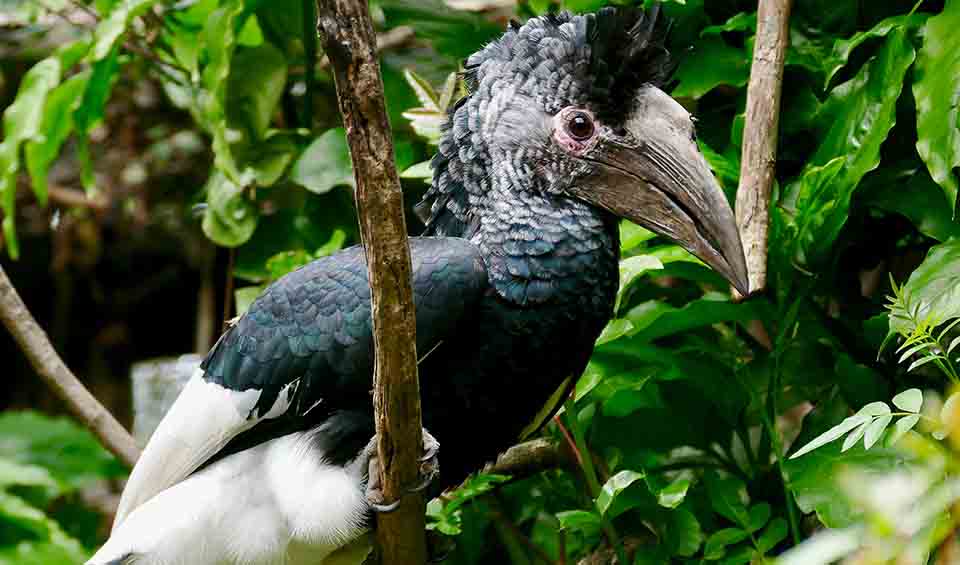One of the most striking and distinctive large hornbills found in Central and parts of East Africa. These birds are easy to recognize thanks to their bold black-and-white plumage and the impressive casque (a hollow structure) perched on top of their heavy, curved bill. Native to the dense forests, forest edges, and wooded savannas from Senegal and Uganda down to northern Angola, these hornbills bring a lively energy to Africa’s tropical forests with their noisy calls and powerful flight.
Its plumage is boldly patterned: black wings and back, a white belly, and white patches on the wings that flash clearly during flight. The oversized bill is pale cream or yellowish with a large, prominent casque that gives the bird an unmistakable profile. Males have a larger and more massive casque compared to females, and it’s believed that the casque helps amplify their loud calls and may also be used for display during mating season.
Black-and-white-casqued hornbills are frugivores, relying heavily on fruit — especially figs — but they are also omnivorous, occasionally eating insects, small mammals, reptiles, and even bird chicks. Thanks to their fruit-heavy diet, they are important seed dispersers, helping tropical forests regenerate by spreading seeds across vast areas. They often forage in pairs or small family groups, moving noisily through the canopy as they hop from tree to tree.
These hornbills have a “booming” call that sounds like a mix between deep barks, growls, and honks. Their calls can be heard from long distances and are used to communicate with mates, claim territories, and keep in touch with family groups.
Distribution
 Angola
Angola Burundi
Burundi Cameroon
Cameroon Central Af. Rep.
Central Af. Rep. Congo-Brazzaville
Congo-Brazzaville Côte D’ivoire
Côte D’ivoire DR Congo (Kinshasa)
DR Congo (Kinshasa) Equatorial Guinea
Equatorial Guinea Gabon
Gabon Ghana
Ghana Guinea-Bissau
Guinea-Bissau Kenya
Kenya Liberia
Liberia Nigeria
Nigeria Rwanda
Rwanda Sierra Leone
Sierra Leone South Sudan
South Sudan Sudan
Sudan Tanzania
Tanzania Togo
Togo Uganda
UgandaAnything we've missed?
Help us improve this page by suggesting edits. Glory never dies!
Suggest an editGet to know me
Terrestrial / Aquatic
Altricial / Precocial
Polygamous / Monogamous
Dimorphic (size) / Monomorphic
Active: Diurnal / Nocturnal
Social behavior: Solitary / Pack / Herd
Diet: Carnivore / Frugivore / Omnivore / Piscivorous / Insectivore
Migratory: Yes / No
Domesticated: Yes / No
Dangerous: Yes / No




